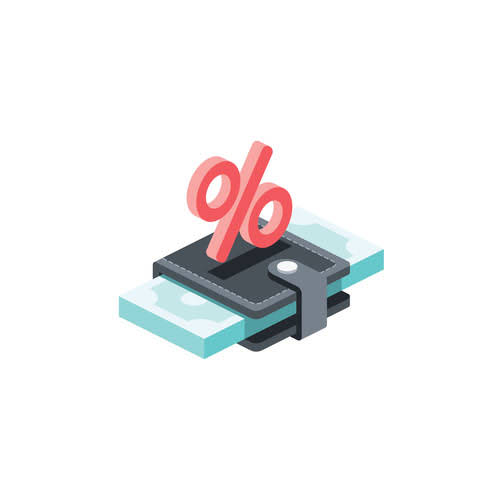Debt to Asset Ratio How to Calculate this Important Leverage Ratio Leave a comment

11 Financial may only transact business in those states in which it is registered, or qualifies for an exemption or exclusion from registration requirements. Finance Strategists has an advertising relationship with some of the companies included on this website. We may earn a commission when you click on a link or make a purchase through the links on our site. All of our content is based on objective analysis, and the opinions are our own.
Comparative Ratio Analysis
Looking at the numbers closer, we see that Southern has been adding debt to its books (organically or by acquiring companies) to grow its operations. It becomes reliable when combined with other ratios and compared with the industry average. A 0.5 debt-to-asset ratio is an alarming bell for a company; it shows that debts finance 50% of its assets and is usually an indication https://www.bookstime.com/articles/enrolled-agent-salary that the company will soon default on its payment. Usually, creditors look for a low debt-to-asset ratio as it signals better financial stability of the company than any other company having a higher ratio. Furthermore, companies with higher debt-to-asset ratios encounter an issue of limited access to capital from the market, as investors typically seek lower ratios.
Net Worth: What It Is and How to Calculate It – Investopedia
Net Worth: What It Is and How to Calculate It.
Posted: Sun, 17 Dec 2023 08:00:00 GMT [source]
Examples of Debt to Assets Ratio Analysis
Interpreting the debt to assets ratio involves understanding the proportion of a company’s assets that are financed by debt. A higher ratio indicates a larger portion of debt relative to assets, suggesting higher financial risk. Conversely, a lower ratio signifies a more conservative financial structure with less reliance on borrowed funds. The debt to asset ratio is calculated by using a company’s funded debt, sometimes called interest bearing liabilities. The total debt-to-total assets ratio compares the total amount of liabilities of a company to all of its assets. The ratio is used to measure how leveraged the company is, as higher ratios indicate more debt is used as opposed to equity capital.

Have questions on formation, banking and taxes?

The debt to assets ratio provides a snapshot of a company’s overall financial health. It offers insights into its capital structure and indicates the extent to which the company relies on borrowed funds. A healthy ratio demonstrates a balanced mix of debt and equity, which enhances confidence among investors and lenders. Analyzing the trend of a company’s debt to assets ratio over time is crucial. A steady or declining ratio suggests financial stability and effective management of debt.
- The information provided in the balance sheet helps determine which method should be used and how much taxes are owed.
- It is also important to note that a debt-to-asset ratio approaching 1 (100%) is a very high proportion of debt financing.
- The formula to calculate the debt ratio is equal to total debt divided by total assets.
- As mentioned above, this formula has different variations that only include certain assets and liabilities.
- To assess the types of assets and their liquidity, see this liquidity ratios article.
Ask Any Financial Question
A company with a high degree of leverage may thus find it more difficult to stay afloat during a recession than one with low leverage. Adam Hayes, Ph.D., CFA, is a financial writer with 15+ years Wall Street experience as a derivatives trader. Besides his extensive derivative trading expertise, Adam is an expert in economics and behavioral finance. Adam debt to asset ratio received his master’s in economics from The New School for Social Research and his Ph.D. from the University of Wisconsin-Madison in sociology. He is a CFA charterholder as well as holding FINRA Series 7, 55 & 63 licenses. He currently researches and teaches economic sociology and the social studies of finance at the Hebrew University in Jerusalem.
- Focus on increasing asset value through effective utilization, improved operational efficiency, and strategic investments.
- Analysts, investors, and creditors use this measurement to evaluate the overall risk of a company.
- The calculation includes long-term and short-term debt (borrowings maturing within one year) of the company.
- For ease of understanding, the companies are listed in ascending order of percentage.
- The total debt-to-total-asset ratio is calculated by dividing a company’s total debts by its total assets.
- This ratio shows the proportion of company assets that are financed by creditors through loans, mortgages, and other forms of debt.
- It offers insights into its capital structure and indicates the extent to which the company relies on borrowed funds.
- It helps partners accurately track their respective shares in profits or losses and ensures transparency between all parties involved.
- We follow strict ethical journalism practices, which includes presenting unbiased information and citing reliable, attributed resources.
- Where total liabilities are the debt or liabilities of a company, and equity refers to the residual value of the company’s assets after deducting liabilities.
- Apple has a debt to asset ratio of 31.43, compared to an 11.47% for Microsoft, and a 2.57% for Tesla.
- That’s why it’s so important to review the management discussion section of a 10-K of the quarterly earnings reports.
Creditors use this proportion to determine the total amount of debt, the ability to pay back existing debt, and whether additional loans should be serviced. Mr. Arora is an experienced private equity investment professional, with experience working across multiple markets. Rohan has a focus in particular on consumer and business services transactions and operational growth. Rohan has also worked at Evercore, where he also spent time in private equity advisory.
Here, “Total Debt” includes both short-term and long-term debts, while “Total Assets” includes everything from tangible assets such as machinery, to patents and other intangible assets. Other common financial stability ratios include times interest earned, days sales outstanding, inventory turnover, etc. These measures take into account different figures from the balance sheet other than just total assets and liabilities. The debt-to-total-assets ratio is a very important measure that can indicate financial stability and solvency.


